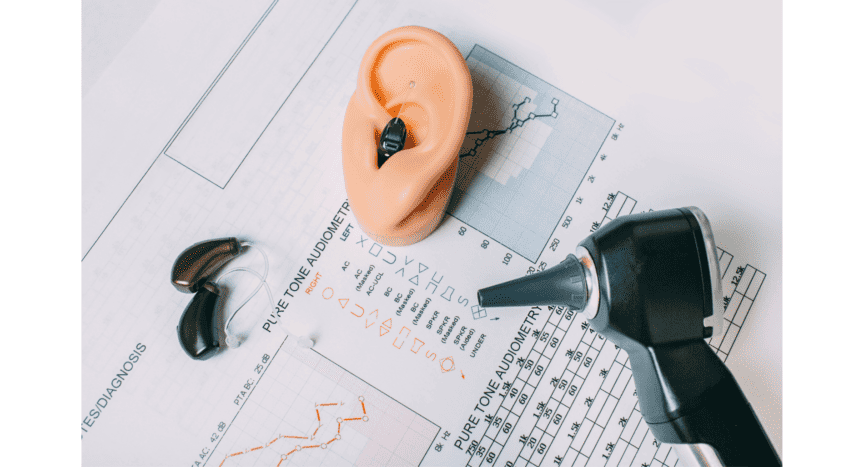As hearing professionals, our mission is to guide individuals through the intricate process of understanding and preserving their auditory health. A crucial aspect of this journey is the hearing exam, a diagnostic tool that provides invaluable insights into one’s hearing abilities. In this article, we will explore what to expect during a hearing exam, shed light on interpreting test results, and underscore the significance of early detection in the context of recent research and potential futuristic interventions.
The Hearing Exam: A Comprehensive Assessment
The hearing exam is a multifaceted evaluation designed to assess the sensitivity and clarity of an individual’s hearing. Here’s a breakdown of what one can expect during this crucial assessment:
Case History and Lifestyle Assessment:
Before diving into the technical aspects, a comprehensive hearing exam typically begins with a thorough discussion about the patient’s medical history and lifestyle. Factors such as exposure to loud noises, family history of hearing issues, and any existing medical conditions are considered. This information aids in tailoring the exam to the specific needs and risks of the individual.
Otoscopic Examination:
The external ear and ear canal are examined using an otoscope. This visual inspection helps identify any visible issues, such as earwax blockages or abnormalities in the ear canal, which may impact hearing.
Pure Tone Audiometry:
Pure tone audiometry is a fundamental component of the hearing exam. The individual is exposed to a series of tones at different frequencies and volumes. The audiologist records the softest sound the individual can hear at each frequency, creating an audiogram—a graph that illustrates the person’s hearing thresholds. This establishes the basis for understanding the type and degree of hearing loss, if any.
Speech Audiometry:
Speech audiometry assesses the individual’s ability to hear and understand speech. It involves listening to and repeating words presented at various volumes. This evaluation provides insights into how well the auditory system processes speech, a crucial aspect of daily communication.
Middle Ear Function Tests:
Tympanometry and acoustic reflex testing assess the middle ear’s functionality. These tests help identify issues such as fluid in the middle ear or problems with the eardrum, contributing to a comprehensive understanding of the individual’s overall auditory health.
Otoacoustic Emissions (OAEs):
OAEs are sounds emitted by the inner ear in response to external stimuli. This non-invasive test can detect issues with the inner ear, providing additional insights into the functioning of the cochlea and auditory nerve.
Interpreting Test Results: Decoding the Audiogram
Understanding the audiogram is pivotal in comprehending the nuances of an individual’s hearing health. The graph depicts the softest sounds a person can hear at different frequencies, measured in decibels (dB), with lower values representing better hearing.
Type of Hearing Loss:
Conductive Hearing Loss: Indicates an issue in the outer or middle ear, possibly due to earwax, fluid, or structural abnormalities.
Sensorineural Hearing Loss: Points to damage in the inner ear or auditory nerve and is often permanent.
Mixed Hearing Loss: A combination of both conductive and sensorineural components.
Degree of Hearing Loss:
Normal Hearing (0-25 dB): Hearing is within the typical range.
Mild Hearing Loss (26-40 dB): Difficulty hearing soft sounds.
Moderate Hearing Loss (41-55 dB): Conversational speech may be challenging to understand.
Severe Hearing Loss (56-70 dB): Difficulty hearing regular speech; reliance on visual cues may increase.
Profound Hearing Loss (71+ dB): Limited ability to hear even loud speech or environmental sounds.
The Road Ahead: Early Detection and Future Interventions
Recent research underscores the critical importance of early detection in mitigating the impact of hearing loss. Beyond traditional interventions like hearing aids and cochlear implants, futuristic possibilities, such as gene therapies and regenerative medicine, offer hope for more personalized and effective solutions.
Early Detection: A Game-Changer:
Early identification of hearing issues allows for timely intervention, significantly improving outcomes. Routine hearing exams, especially for those at higher risk, are instrumental in catching potential problems in their nascent stages.
Technological Advances:
Cutting-edge technologies continue to reshape the landscape of hearing interventions. From advanced hearing aids with artificial intelligence capabilities to implantable devices that directly stimulate the auditory nerve, these innovations enhance not only hearing but overall quality of life.
Gene Therapies and Regenerative Medicine:
Emerging research in genetics and regenerative medicine holds promise for addressing the root causes of certain types of hearing loss. Customized treatments targeting specific genetic mutations or regenerating damaged auditory cells may revolutionize how we approach auditory health.
Conclusion: A Compassionate Approach to Auditory Wellness
As hearing professionals, our commitment extends beyond diagnostic assessments. It involves guiding individuals through the intricacies of their auditory health, fostering understanding, and exploring avenues for personalized interventions. By emphasizing the significance of early detection, staying abreast of technological advancements, and embracing the possibilities of future interventions, we pave the way for a future where everyone can fully experience the richness of the soundscape around them.

